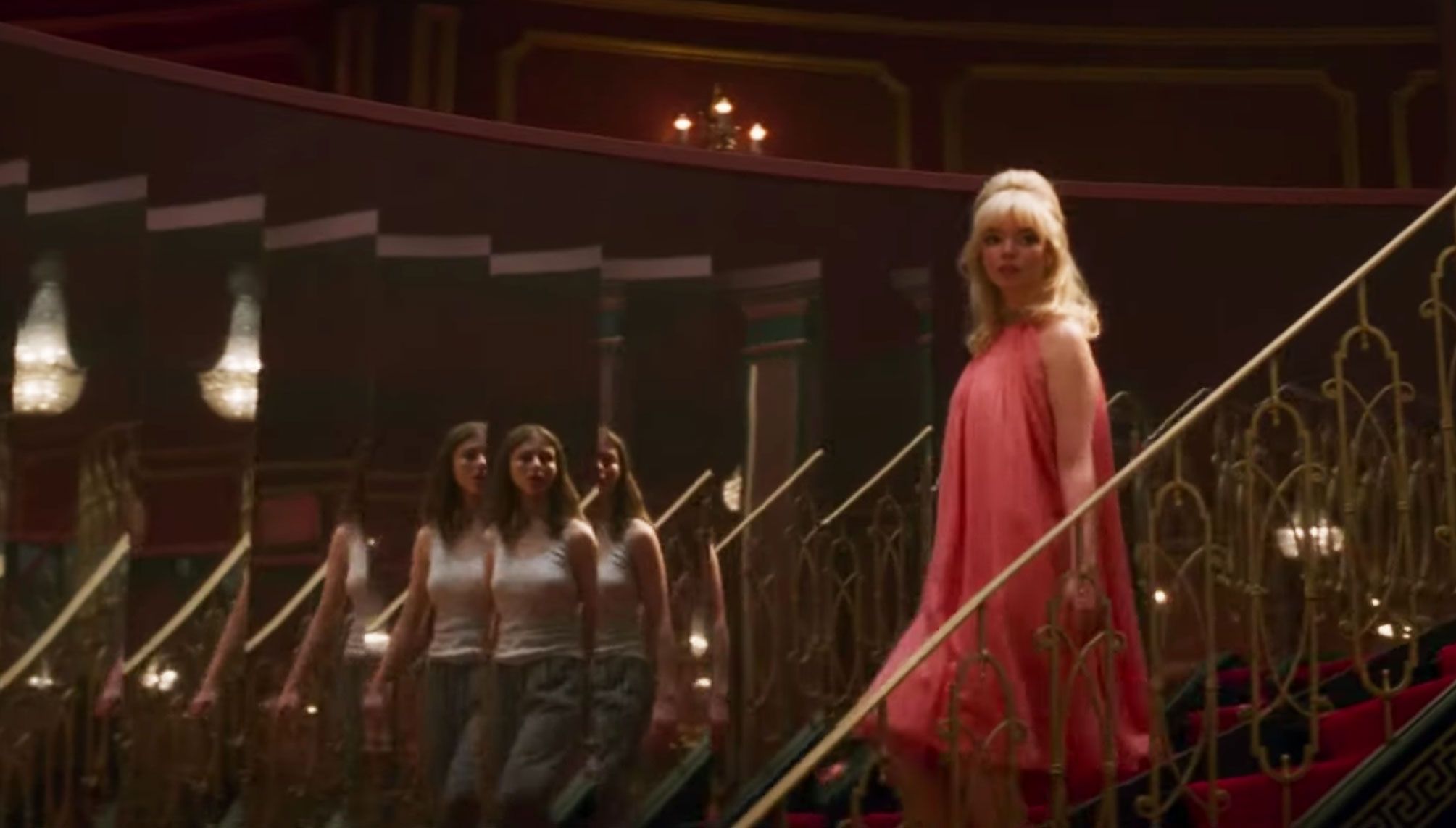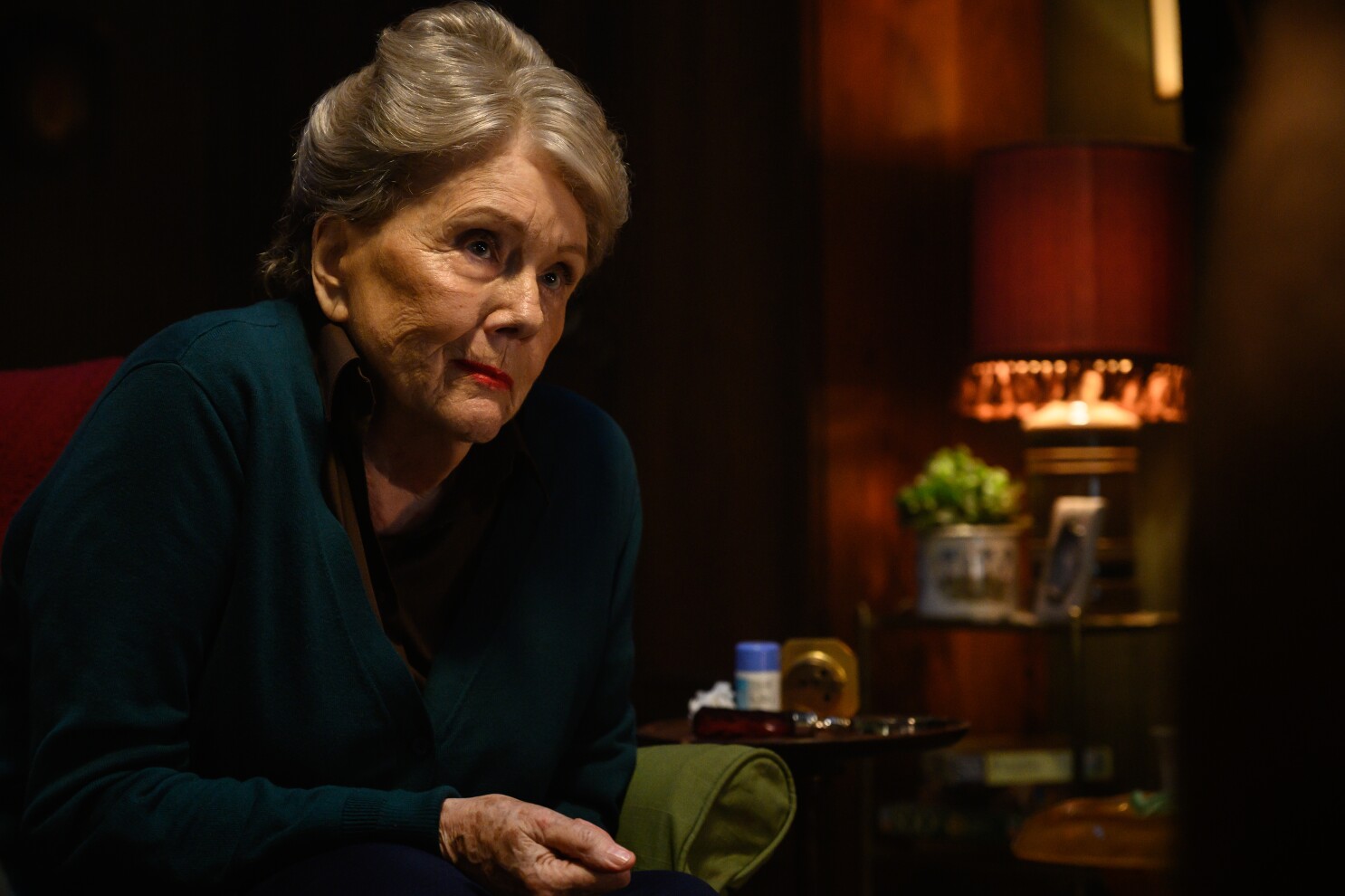There’s the old saying that those who forget the past are doomed to repeat it. But we don’t often talk about those who do remember the past, but with rose-tinted glasses. Last Night in Soho is a time-travel/horror hybrid that shows off everything, and I mean pretty much everything, that people love about London in the 1960s. But it also holds a mirror up to the time to remind us that not everyone had a groovy time in the swinging 60s and that certain horrors still plague us today.
Last Night in Soho begins with one of the last mornings in Cornwall for Eloise (Thomasin McKenzie). Eloise, who sometimes goes by Ellie (hinting at the various shifts in identity to come), receives her dream acceptance letter to study fashion in London. Her grandmother cautions her about the big city, both the people that might take advantage of her and the overstimulation that might occur from her sixth sense. Yes, she can see ghosts, but for now just that of her mother.
Arriving in London, the excitement of expectation is immediately juxtaposed with sobering reality. A friendly cab driver welcomes Eloise to the big city before making inappropriate comment about her body. Her roommates greet her eagerly before keeping her awake with loud parties, prompting her to rent a room from the matronly Miss Collins (Diana Rigg). When Eloise goes to sleep in her new room, she dreams of 1960s London. Or rather, she’s sent back in time, inhabiting the body of singer Sandy (Anya Taylor-Joy). At first, these dreams provide refuge and inspiration for Eloise and her designs. But both Eloise and Sandy have their expectations shattered when various men take advantage of Sandy and then resurface as ghosts in the present day for Eloise.
Before her first time travel adventure, Eloise throws her bed covers over herself as the camera pulls back, revealing the sheets extending past her for a great distance. Cinematographer Chung-hoon Chung helps convey this time travel transition and many others in aesthetically dazzling yet structurally minimalist ways. Especially impressive are the many times Eloise walks past a reflective surface, revealing Sandy, and vice-versa. When we switch back and forth between their perspectives, the film implements this change with ease and a bit of flair.
Last Night in Soho prides itself on panache. Whenever Eloise sees a ghost, she takes off running through the streets of London like she’s The Beatles in A Hard Day’s Night. But of course, that’s precisely the point. Director Edgar Wright can’t pass up a chance for a 60s homage. In a stylistic piece like this, the saying “less is more” flies out the window. More is more.
Known for his film soundtracks, Wrights uses a ton of 60s music in the film, relevant when dealing with the period but also suitably creep when underscoring horror elements. The lighting design also evokes the period, as well as the classic horror film Suspiria through the neon lights outside Eloise’s window that paint her room red at night. The sets and effects recreate an almost surrealist London of the 60s. And of course, in a movie about a fashion designer, how could we not talk about costumes? Designer Odile Dicks-Mireaux rises to the challenge with 60s period costumes as well as the contemporary interpretations of them that Eloise brings to class.
As for the cast, some performers get more to do than others, but all of them make the most of their screen time. McKenzie earns her scream queen street cred as Eloise, shifting gears from daydreaming reticence to wide-eyed terror at the scratch of a record needle. Michael Ajao sells the believability of a supporting character who could otherwise come off as over-saccharin in his constant need to help others. Taylor-Joy doesn’t have the heaviest role of her career but does get the rare chance to share her talents as a singer and dancer. Matt Smith appears in the film as Sandy’s manager and effortlessly glides from playing charming to sinister. By this point, the role of creepy, ominous man is like a well-worn glove to Terrence Stamp, but he fills it well. And finally, Diana Rigg appears in her last role before her death, and though it’s not a large role she commands every scene she’s in.
Horror has always done well when used as a vehicle for looking at society, and Wright and co-writer Krysty Wilson-Cairns deftly explore the horrors of nostalgia and of abuse towards women. At first, the ghosts in the film are symbolic of the memories of the men who harmed Sandy in the past. But then they morph into real ghosts, actively stalking Eloise in the present and upholding the metaphor while also making them even scarier. Last Night in Soho draws a clear line from the time travel fantasy of its first half to the horror mystery of its second, making you forget that these genres typically don’t go together.
The film strikes a good balance between the metaphorical and the paranormal, but it does stumble occasionally. Talks around mental health get a bit dicey, as the film struggles to articulate what constitutes a crisis for its characters. There’s also a late-game development that briefly undermines the feminist message of the film, which gets saved by a bold course correction.
Last Night in Soho juggles a lot of things, between its genres of period piece time travel and horror, its themes of nostalgia and sexism, and its many star players and production elements. Yet somehow, it patches it all together with hardly any seams showing, like the costumes at the center of Eloise’s dream.
Last Night in Soho Review
Last Night in Soho
Visually dazzling and with a 60s playlist that would make any retro diner jealous, Last Night in Soho has a lot of style, but hardly any of it comes at the expense of substance.
Pros
- Great horror that serves the storytelling.
- Cast members seem to relish their roles.
- All of the 60s references and homages.
- A treat for the eyes and ears.
Cons
- A little slow before it really picks up.
- Doesn’t quite convey all of its messaging.
-
Last Night in Soho





